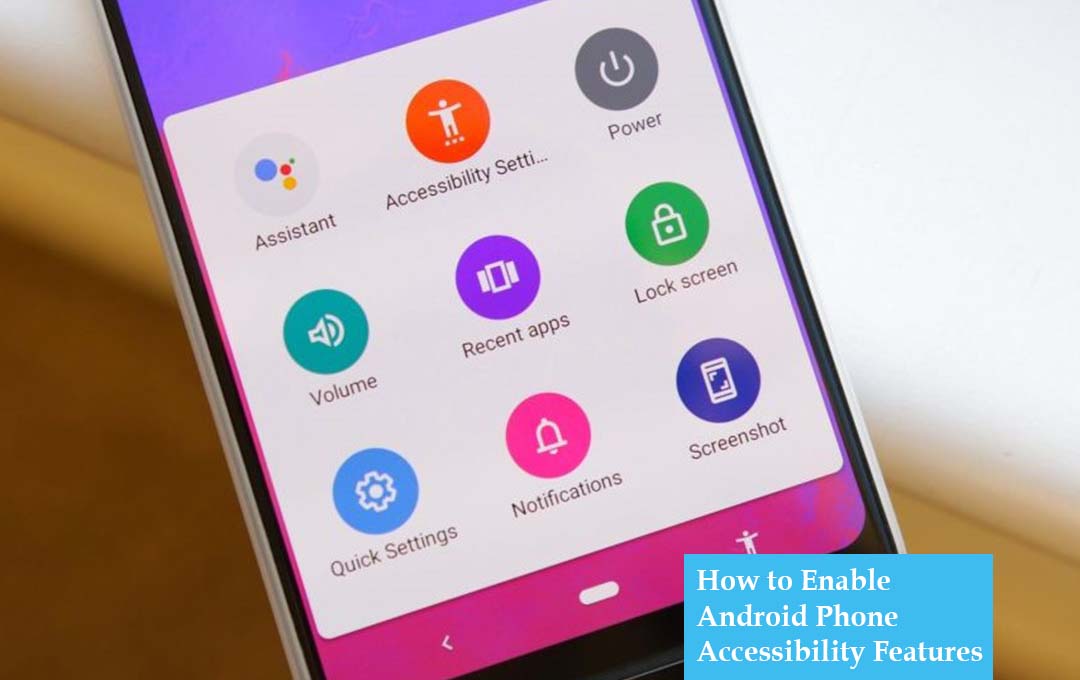Here I would be giving you steps on How to Enable Android Phone Accessibility Features. Accessibility features have been designed by Google on Android to be inclusive of people with disabilities. When it gets activated, these features provide an enhanced user experience as it makes the phone a lot more comfortable and convenient for the users to navigate.

Some of the accessibility features that are available on your Android device include you zooming in right on your screen, making use of an external keyboard in other for you to control the phone, and selecting text that is on the screen for your phone to read aloud.
Android Phone Accessibility Features
While the accessibility features were designed for people who are disabled in some way, they are quite useful to customize by anyone. Anybody can customize their phone to fit their specific needs and preferences.
Well, to begin with, you can make use of it to enable captions for supported apps, make changes to your phone’s color and font size, and make use of you power button to end calls. If you would like to maximize your user experience and make your phone work really well for you, here is how you would be able to turn on the Accessibility features on your Android device.
How to Enable the Accessibility Menu
One of the easiest, and yet most helpful accessibility features is the aptly-named accessibility menu. It is a very big, easy-to-see menu where you get to lock your device, adjust the volume and brightness, take a screenshot, and more. By default, it is not turned on, but you should be able to enable it via the settings app.
- First off, launch the settings app
- Then head to Accessibility
- Right under “interaction Controls,” select “Accessibility Menu.”
- Switch on the “Accessibility Menu Shortcut.”
- In the Pop-up box, select Allow.
- Tap on “Got it” when you see the next pop-up box.
With this, you should be able to see the Accessibility menu button. It is a floating icon by default attached to the right side of your screen, but you can choose to drag it around if you want it to appear in another place.
If you find the controls to be even smaller, you can choose to change the size in the accessibility menu settings. Right from your settings app, head to Accessibility > Accessibility Menu > Settings. After that, turn on “Large buttons” in other for you to increase the accessibility of menu buttons.
Other Accessibility Features That You Can Enable
There are plenty of other amazing Accessibility features that you can enable in the settings app. Depending on what you would need, here are some of them:
- Select to Speak: this would read out the items you tap on the screen
- TalkBack: this is also a screen reader. However, aside from reading the items that you select, this would also offer you some spoken feedback on your actions and notifications. This would enable you to interact with your device without having to look at the screen. You should be able to access Talkback holding both volume keys for about three seconds.
- Autoclick: Sets a physical mouse’s cursor in other to click on an item right after dwelling on it for quite some time.
- Power button ends call: Uses the Phone’s Power button to end calls
- Dark Mode: this would give your device a dark makeover. It is basically a dark-colored theme that makes use of light-colored text on dark background.
- Auto Rotate: this makes use of the screen auto-rotate depending on how you hold the device.
- Time to take Action: Sets a particular length of time to display notifications that required your action.
- Magnification: this temporarily Zoom the screen
- Switch Access: this allows you to control your device making use of physical switches like a keyboard instead of the touchscreen.
- Color Correction: this would adjust the colors on your phone. You can choose from presets for three forms of colorblindness: deuteranomaly, tritanomaly, and protanomaly.
- Color Inversion: the color on your phone would be inverted. This turns light color to dark and vice versa.
When it is turned on, you should be able to easily access a lot of these features right from your accessibility menu.
FAQ
Why is my Phone Accessibility not Working?
First, launch the “Settings” app straight from the all apps screen, then select “Accessibility.” Make sure that the options you need are all enabled. Select “Enhance Web Accessibility,” for example, to allow Google websites to install browser scripts to aid accessibility.
How to Fix Android Accessibility Settings that Turn off Automatically?
- On your device, launch the settings app and select Accessibility
- Select the installed apps button
- Select A2U Android
- Toggle Accessibility to “Off” and then “On” again (this may show as on but still be disabled – this step would reset it).
Is Android Accessibility Necessary?
Do I need the Android Accessibility Suite? If you have any disability mentioned above – visual, hearing, motor, or speech impairments – then the Android Accessibility Suite has a lot to offer you. A lot of tools in this suite would help you get the maximum use and enjoyment out of your smartphone or tablet.



